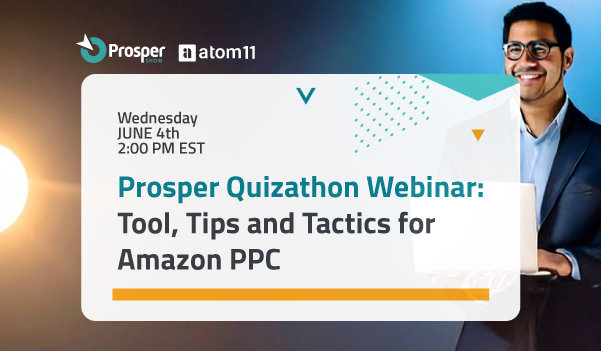Amazon sellers today are gifted with the comforting embrace of Fulfillment by Amazon. Yes, FBA can have its issues, but where else can you find and hire a 3PL with practically no contract, send them pretty much anything you want in ANY quantity, have them manage customer service and returns, and get access to a special audience of customers who buy more than any other audience, all with just an hour at your computer and a few hours packing boxes.
For starting an ecommerce business, FBA is a pretty miraculous tool. Amazon sellers leveraging FBA have a powerful system available to them for hitting massive revenue goals with less operational planning and overhead than ever before.
But the majority of Amazon sellers, particularly those who started on Amazon, never try their hand at selling on other marketplaces. There are lots of reasons why… too hard to get started, can’t get approval for the marketplace they want, don’t want to invest in building a store, etc…. but the reality is that billions of dollars of ecommerce happens off Amazon, and that will continue to be the case.
FBA can be deployed for your non-Amazon sales, via a program called multi-channel FBA. What should a seller know about multi-channel FBA when it comes to expanding their business onto other marketplaces? Is it a worthwhile endeavor?
Pros
You’re gonna get more sales
By far the #1 reason for trying your hand at multi-channel FBA is that you’ll drive more sales. If your product can sell on Amazon, it can sell off Amazon. Maybe you’ll need to tweak your merchandising strategy a bit, and maybe the price needs to change as well, but it can sell.
Concerned about margins? What if your supplier gives you a break on COGS at the next size level of purchase order? It could be worth it to break even just to grow overall sell-through and expand your purchasing power.
But that’s likely the worst case scenario. The fact is many sellers do multi-channel FBA today and make money.
It’s quick and easy to expand
If you have listings on Amazon, you have everything you need to sell elsewhere. No doubt you’ve got product images, titles, descriptions, and UPCs or other product IDs.
While Amazon doesn’t make all of its catalog data available to software providers, and rightfully so, there is certainly enough to get started. A quality, affordable multi-channel listing tool will pull in the basics for you to build a catalog of your own inventory, so you can get started listing products elsewhere.
In just a few hours, you can have your products up for sale on a new channel, and it will require little more than signing up on the new channel and employing a small piece of software.
Hassle-free inventory management ftw
And once those listings are live on your new channel, they can stay in sync with your inventory at FBA! Sellbrite built the very first multi-channel fba automation tool, and that functionality exists today for Amazon fulfillment centers around the world.
Even if Amazon is your fastest selling channel, you can create safe buffer rules to prevent overselling by pulling down your listings from your website or other marketplace when you run low.
No new costs for inventory or labor to worry about
The most important part of all this is that the burden of expansion is entirely on your watch, not your wallet. While a few hours and some simple software can set you up for new sales, there is no additional investment required to support the new business unit.
No need to worry about inventory storage or relocation fees or extra staff to handle fulfillment of the new orders. Everything you’ll need to fulfill your new sales channel is already in place and fully automated.
Cons
Higher shipping expenses per order
While the costs to expand to a new channel won’t grow much, the unit economics can change a bit. Amazon’s multi-channel FBA rates are a bit higher than traditional Amazon fulfillment. This is to account for the lost commission revenue that Amazon typically earns for each order.
Small sellers with super thin margins may find that fulfilling orders with multi-channel FBA is cost prohibitive without scale or purchasing power to bring down COGS.
Tracking info can get lost
Amazon is using its own courier, Amazon Logistics, more and more to fulfill orders. While this is not an issue on all channels, some marketplaces will not accept tracking from the Amazon Logistics courier service. Others, like Walmart, even have a rule that sellers need to use their own fulfillment, or a non-FBA logistics partner.
For sellers at scale, there are other options. Walmart offers a Free 2-Day Shipping experience similar to Prime that requires either self-fulfillment or an approved fulfillment partner, which operates like FBA.
Amazon-branded packaging can cause confusion
One of the more inconvenient issues with multi-channel FBA is that packages arrive in Amazon packaging, even if the order was placed on, for example, eBay.
It’s a confusing experience for buyers, who are no doubt expecting anything but an Amazon package.
While this isn’t a deal breaker issue for sellers, it can potentially lead to less than stellar feedback on an otherwise successful transaction.
Conclusion
Leveraging multi-channel FBA on other marketplaces is a fast, efficient, and smart way to start your ecommerce expansion. If you’re considering expanding your Amazon business, why not follow the ‘Lean Startup’ methodology of testing something as minimally as possible to search for results?
Multi-channel FBA does that, exactly. Sure, it has its downsides, but the most important fact is that you can experience increased sales, then improve and optimize other facets of the business as you go.
As you scale up your new sales channels, there are other advantageous programs out there for managing inventory and fulfillment that offer extra benefits for each channel. Good software tools will help you navigate your way through a multi-channel sales strategy and find success.



Recent Comments